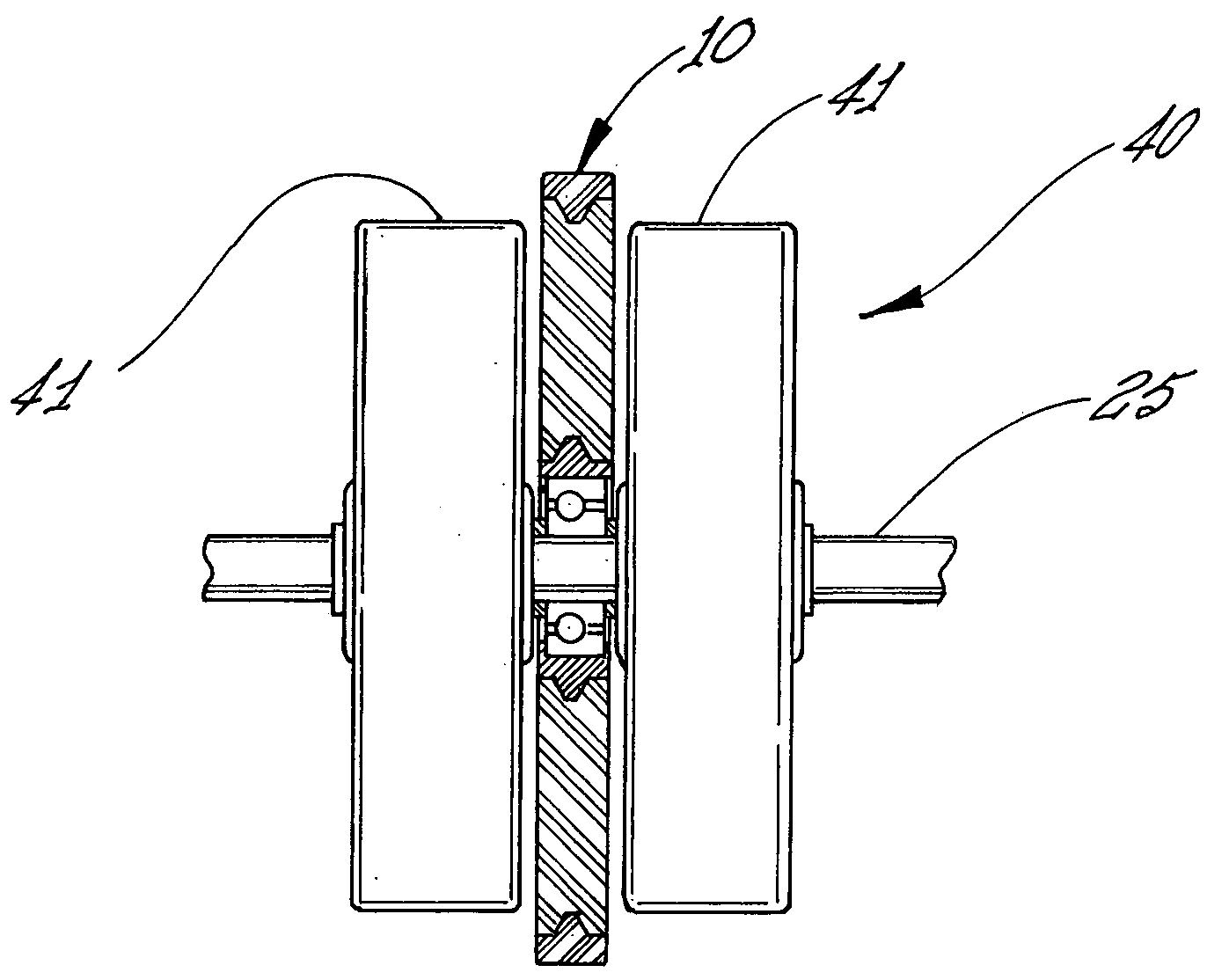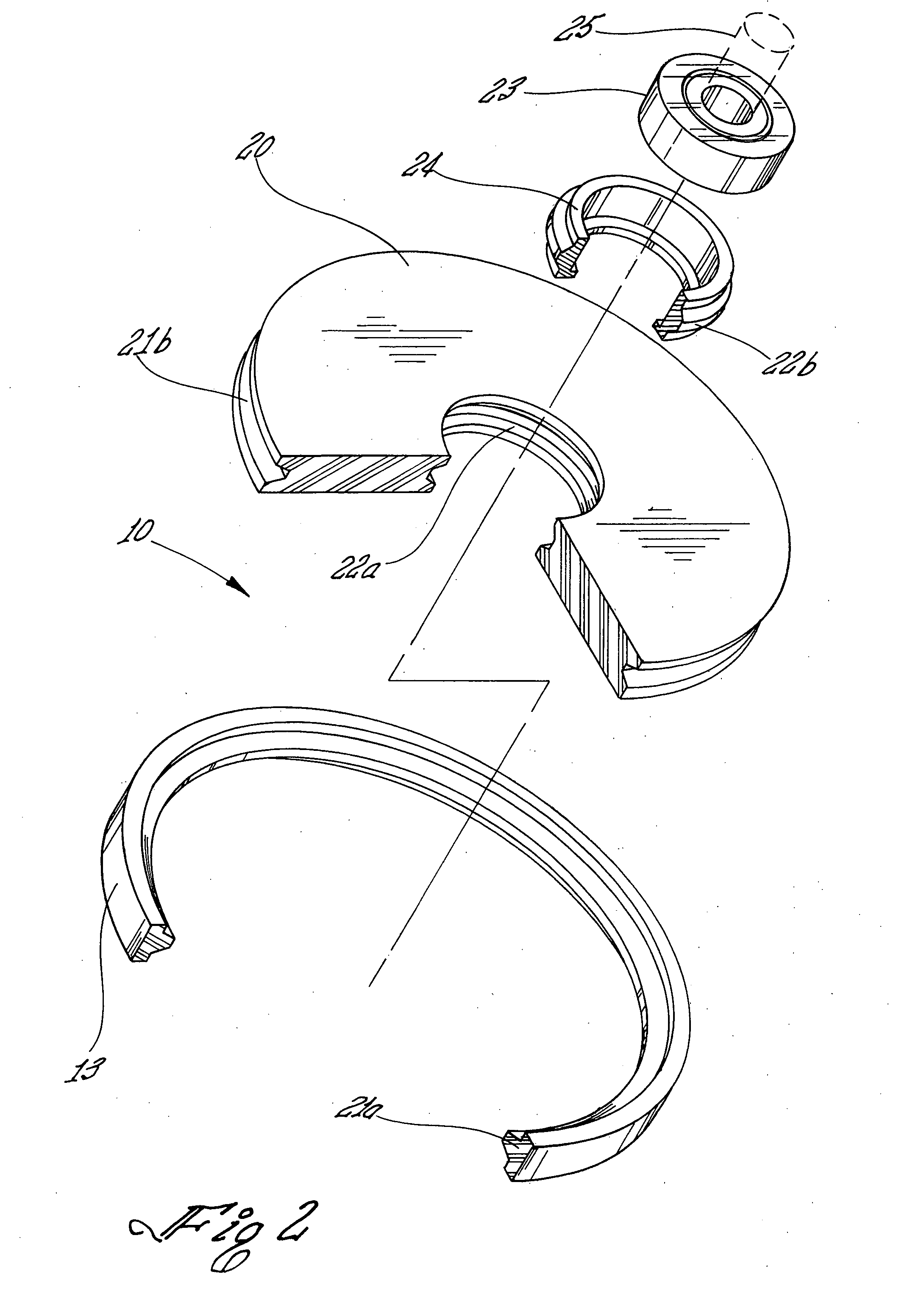Compound shock absorbing wheel
a shock absorption and wheel technology, applied in the field of wheel assemblies, can solve the problems of reducing the shock absorption effect of wheelchair users, affecting the use of wheelchairs, etc., and achieve the effect of reducing the shock
- Summary
- Abstract
- Description
- Claims
- Application Information
AI Technical Summary
Benefits of technology
Problems solved by technology
Method used
Image
Examples
Embodiment Construction
[0029]When a wheelchair is propelled in a forward direction, the front guide wheels are the first part of the wheelchair to encounter a discontinuity in the supporting surface. Such an encounter results in a sudden vertical displacement of the guide wheels, the magnitude of the displacement and the rate of change depending on the speed of the wheelchair and the size of the discontinuity. The sudden change in momentum is transferred to the wheelchair and the passenger. The magnitude of the rate of change in momentum or shock can be reduced by the addition of shock absorbing means to the guide wheel assembly. An example of the effect of shock absorbing means is shown pictorially in FIGS. 1a-1c. FIG. 1a is a schematic drawing showing one of the two guide wheels 10 of a wheelchair (not shown) in accordance with the present invention approaching a shocking event comprising an abrupt discontinuity 11 in the relatively smooth supporting surface 12. FIG. 1b is a schematic drawing showing a ...
PUM
 Login to View More
Login to View More Abstract
Description
Claims
Application Information
 Login to View More
Login to View More - R&D
- Intellectual Property
- Life Sciences
- Materials
- Tech Scout
- Unparalleled Data Quality
- Higher Quality Content
- 60% Fewer Hallucinations
Browse by: Latest US Patents, China's latest patents, Technical Efficacy Thesaurus, Application Domain, Technology Topic, Popular Technical Reports.
© 2025 PatSnap. All rights reserved.Legal|Privacy policy|Modern Slavery Act Transparency Statement|Sitemap|About US| Contact US: help@patsnap.com



